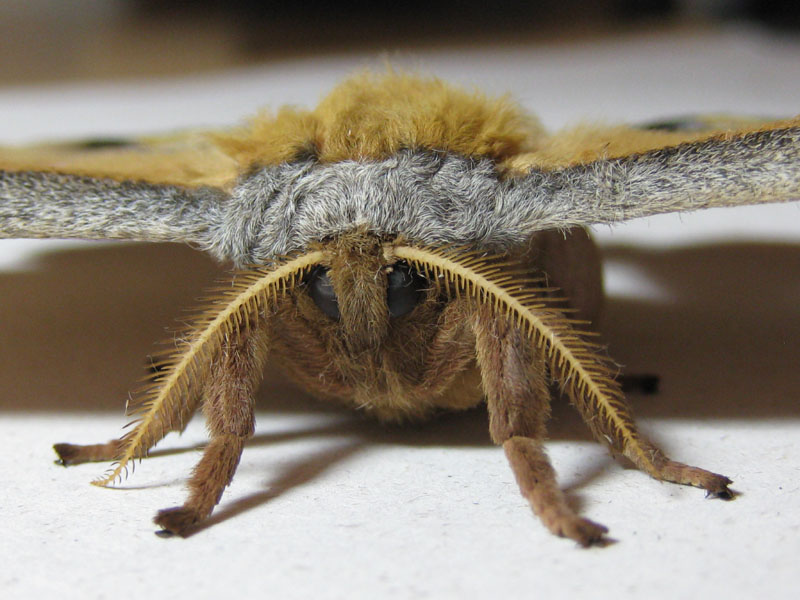
Thank you Josephine.
Three females have emerged from August 27-30, 2009. But there are no males to mate with them. They must have a male to mate with to lay fertile eggs and continue the cycle.
I fashioned a large cage from a barrel and cover it with one-quarter inch mesh. I am hoping the mesh is big enough for them to mate through, but not let my females escpae in the night. In the bottom of the barrel you can see the pink netting and orange cardboard from their original enclosure. To keep them from flying away during the transfer, I just put their box inside the barrel. This also gave them some cover, as they would crawl under the cardboard for safety.

Hanging out on the mesh just before midnight on September 1, 2009. They are beating their wings and putting out phenomes, but will the males come?

September 2, 2009 9 a.m. - In the light of day, the moths are still hanging out and waiting for a male.

September 4, 2009 6 p.m. What's this peaking through the mesh? Check out the antenae! Long feathery antenae mean this is a MALE inside the barrel.

September 4, 2009 Not just one male, but THREE males have found their way into the cage. They are mating. The females are laying many eggs on the cardboard, but also on the black plastic liner, and even on the cocoon they emerged from. It is a veritable moth orgy. Finally, their life cycle is complete.

September 5, 2007 Two of the three newly arrived males. Note the one on the right seems to have damaged wings, but the one on the left are whole. I don't know how they got inside the barrel, but none of them tried to leave afterwards.

A close-up of the male with feathery antenae

September 8, 2009 Does this look like a happy, satisfied female? They three females have laid hundreds of eggs, and now, after mating, they should be fertile.


September 6, 2009 The result of all the work -- her eggs. Note, the ruler marks are in 1/16th of an inch. The eggs are approximately 3/32nds of an inch, or 1/10th of an inch in diameter. Ten eggs lined up would be one inch.

With their work done, these months lived on for almost two weeks. Their eggs produced approximately 160 baby caterpillers. To follow the lives of this next generation, click here.